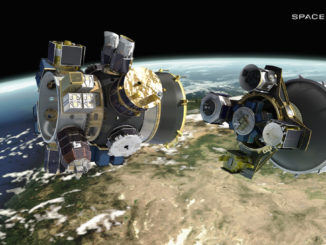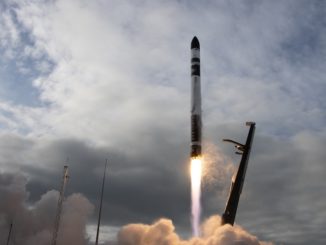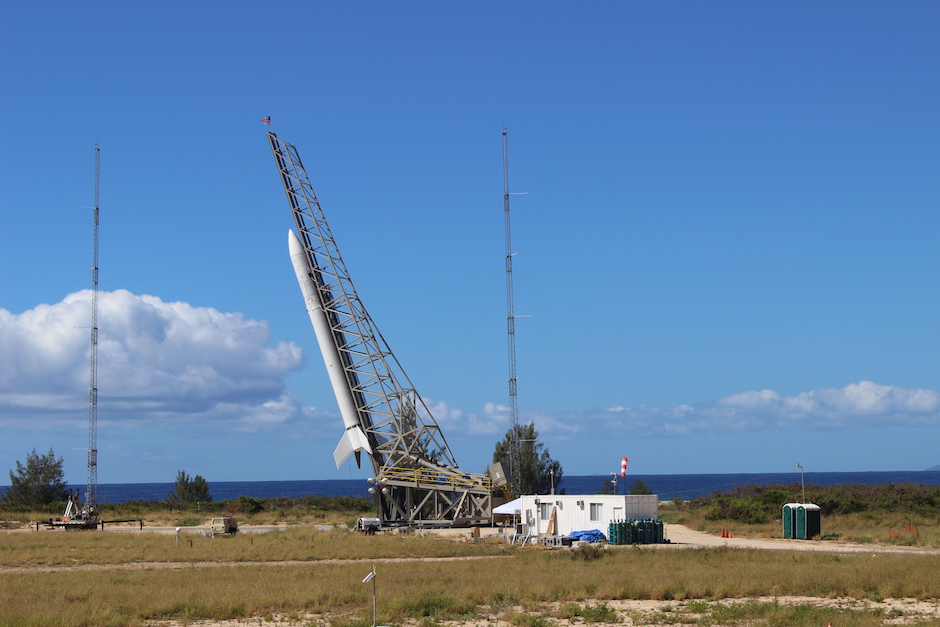
U.S. military authorities have granted approval for liftoff Tuesday of a simplified satellite launcher from Hawaii on a test flight officials say will help drive down the costs of sending small spacecraft into orbit.
Standing 67 feet tall and measuring 5 feet in diameter, the Super Strypi launch vehicle is based on a Cold War-era suborbital sounding rocket design, but with modern propulsion and a purpose-built launch pad at the U.S. Navy’s Pacific Missile Range Facility in Kauai, Hawaii.
The rocket was supposed to blast off Oct. 29, but launch crews encountered issues in pre-flight processing that put the mission on hold. Officials said late Monday the launch is now on track for Tuesday.
The mission’s exact launch window remains secret, but Spaceflight Now will provide live video coverage and updates beginning at 2300 GMT (6 p.m. EST; 1 p.m. Hawaii time) in partnership with the University of Hawaii.
It will take about 13 minutes to deploy the rocket’s 13 payloads into polar orbit.
Hazard notices released to pilots indicate the three-stage rocket will soar south from its launch pad at Kokole Point, a sandy beach on the southwest shore of Kauai.
Three new solid rocket motors developed by Aerojet Rocketdyne will power the rocket into orbit.
A powerful first stage motor, called the LEO-46, will drive the rocket off a more than truss-mounted erector rail system tilted toward the flight’s southerly launch trajectory. Engineers from Sandia National Laboratories and Northrop Grumman based the rail launcher on an old system used on the Scout rocket program retired in the 1990s, and placed the 100-foot-tall tower at a new concrete pad on Kauai.
The rail sits on an actuating mount, allowing engineers to point the rocket toward the correct launch azimuth at the right elevation angle.
The Super Strypi’s first stage motor, which Aerojet says generates 284,000 pounds of thrust, will quickly accelerate the 31-ton rocket past the speed of sound.
The Super Strypi has twice the thrust-to-weight ratio of any operational space launcher, and the rocket’s high-powered spin-stabilized first stage motor will push the rocket into the rarefied upper atmosphere in a burn lasting about 76 seconds.
Canted aerodynamic fins at the base of the rocket will maintain its orientation in the first phase of flight. When the Super Strypi’s second and third stage motors take over, a cold gas thruster system will keep the rocket spinning to ensure the rocket stays on course.
Once the two upper stage motors completed their firings, each expected to last less than one minute and separated by short unpowered coasts, the satellites aboard the rocket will eject from their launch adapters.
The target orbit has a top altitude of 304 miles (490 kilometers) and a perigee, or low point, of 257 miles (415 kilometers), with an inclination angle of 94.7 degrees to the equator, according to a website run by the Hawaii Space Flight Laboratory, a University of Hawaii center that built the largest satellite riding on Super Strypi.
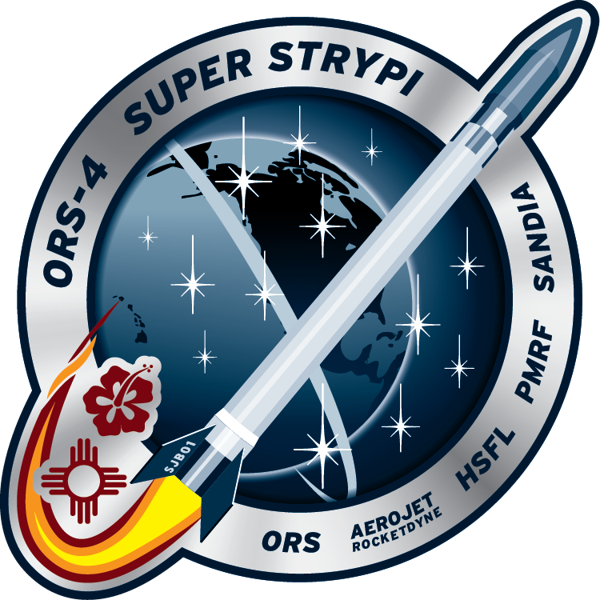
Engineers say the unique self-guided launch kit eliminates the need for a costly computer guidance system, but the Air Force acknowledges the demonstration flight carries some extra risk that required the sign-off of senior military leadership.
“This sounding rocket approach keeps the system as simple as possible and eliminates the significant amount of engineering hours required on guided rockets to develop control algorithms and testing,” military officials said in a statement.
The Super Strypi test launch is managed by the Air Force’s Operationally Responsive Space division headquartered at Kirtland Air Force Base, New Mexico. Known as the ORS-4 mission, the launch launch form Hawaii is the latest in a series of experiments run by the ORS office, which was set up in 2007 to investigate ways to reduce the cost of military space missions.
The military bills the Super Strypi as a quick-reaction booster capable of rapid call-up and activation. Many ORS officials have a vision of deploying a fleet of near flight-ready rockets that the military, or perhaps commercial satellite operators, can use to plug gaps in satellite networks caused by attack or failure.
For Tuesday’s launch, Air Force managers partnered with the Hawaii Space Flight Laboratory, which acts as the ORS-4 mission’s prime contractor. Aerojet Rocketdyne won a deal to develop and supply new rocket motors for the launch from the Navy’s missile range on Kauai.
The Super Strypi is an extension of the Strypi sounding rocket developed in the 1960s to support nuclear weapons testing in space. The Strypi program was led by Sandia, which is responsible for some launch systems and integration tasks on the ORS-4 mission.
The U.S. Air Force’s Operationally Responsive Space office has spent more than $45 million on development of the Super Strypi and the ORS-4 mission. That figure does not count investments from other mission partners, including institutions that built the satellites riding on the launch.
The ORS-4 launch was originally slated for 2013, but delays securing an opening on the range in Hawaii and development troubles with the LEO-46 first stage motor pushed back the flight until this year.
The payloads shrouded inside the nose cone of the Super Strypi are:
- HiakaSat, a 121-pound (55-kilogram) satellite from the University of Hawaii with a hyperspectral imaging camera to test new Earth observation technologies for military and scientific applications
- Edison Demonstration of Smallsat Networks, a mission from NASA’s Ames Research Center consisting of eight 1.5U CubeSats about the size of tissue boxes, designed to demonstrate a satellite swarm concept with radio cross-links and reconfigurable software
- PrintSat, a NASA-sponsored 1U CubeSat from Montana State University with primary and secondary structural components made with additive manufacturing
- Argus, another NASA-sponsored 2U CubeSat from St. Louis University, will study how well modern electronics operate in space by comparing their radiation event rates to ground predictions
- STACEM, a 3U CubeSat the size of a shoebox sponsored by the National Reconnaissance Office and developed by Utah State University’s Space Dynamics Laboratory to test a new optical sensor in orbit for Earth observation
- Supernova-Beta, the first orbital test flight of Pumpkin Inc.’s commercial 6U CubeSat bus, about the size of a small handheld toolbox
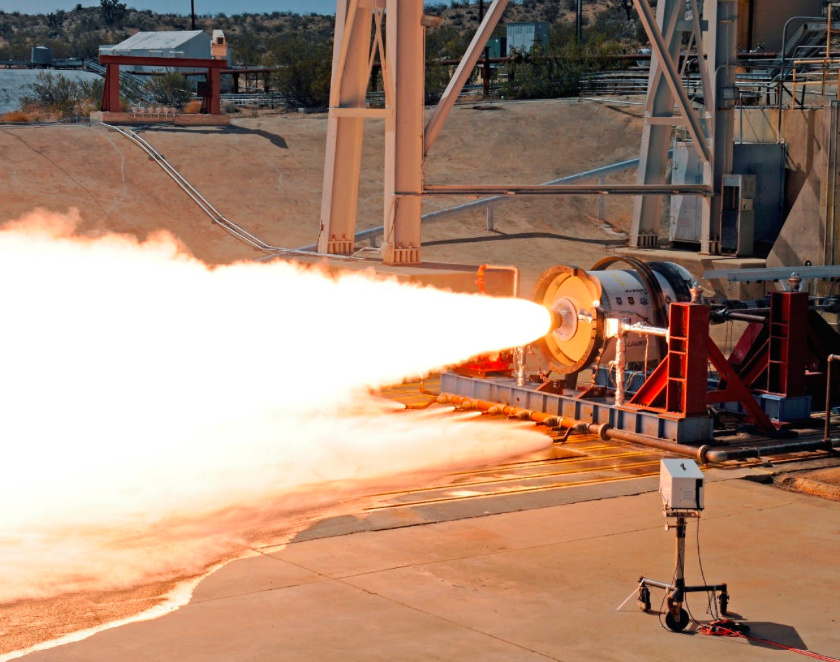
Military officials have not confirmed if they plan any further Super Strypi flights in the future. Several other rockets in its class are in development by other Defense Department agencies and commercial companies to go after the same market.
A report by the Government Accountability Office published Oct. 29 said none of the military’s responsive launch programs — including the Super Strypi — is positioned to move from development and demonstration into production and fielding. The GAO also found the military has not finalized its requirements for a responsive launch capability due to uncertainties in the threat environment, and added that the business case for on-call rockets hinges on the likelihood of a mission failure or adversary attack.
The GAO reported the Defense Department has three agencies — DARPA, ORS and the Army’s Space and Missile Defense Command — working on “five concurrent responsive launch programs, all designed to carry small class payloads to the same orbit.”
The government watchdog agency said military officials told them the programs are not duplicative because they are pursuing different objectives, such as launching by air or rail.
In an ORS-4 mission fact sheet, military officials described the Super Strypi as “the front-running candidate for a durable long-term solution” as a dedicated rocket for lightweight satellites.
The Super Strypi can deliver up to 660 pounds, or 300 kilograms, to low Earth orbit, according to the ORS-4 fact sheet. Its objective on the cost front is to fly for less than $15 million per launch.
The costs of satellites of that mass are declining, but launch costs remain “disproportionately high,” the fact sheet said.
“As spacecraft costs decline more rapidly than launch costs, the launch portion of small satellite missions is quickly becoming the majority of total mission costs,” officials wrote in the mission overview. “ORS has achieved glowing success in reducing spacecraft cost and time to manufacture, and is now pursuing the launch part of the equation.”
Email the author.
Follow Stephen Clark on Twitter: @StephenClark1.

